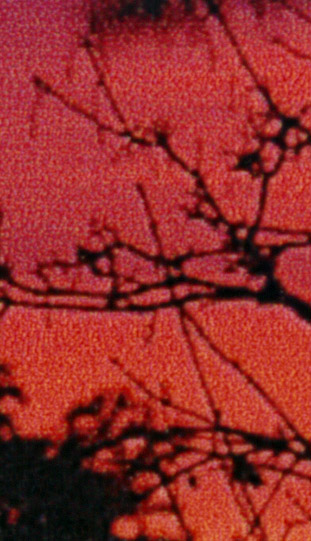







Chromira Digital Prints
The color printing industry is changing. Fuji and Kodak have stopped manufacturing the paper and chemistry for traditional type "R" darkroom prints from transparencies. After careful evaluation and testing for over a year, I have decided to offer digital versions of my prints on the ZBE Chromira optical printer. These prints are digital exposures on color negative (Type "C") photographic paper, processed with normal darkroom chemistry. The result is a real photograph with the archival characteristics of a traditional color print.
The Chromira's print resolution is 300 pixels per inch (ppi), but each pixel is digitally sharpened by printer software to an effective resolution of 425 ppi. This resolution is indistinguishable to the eye compared to an image printed from film. Chromira photographic prints are not inkjet or giclée prints. The individual pixels are continuous tone, meaning that the full area of each pixel is the color measured in the digital scan, not an ink dot surrounded by white. Because the colors occupy all the visible paper surface, a continuous-tone print has the look of a real photograph without the speckled, grainy appearance of an inkjet print. See the test samples below for an example of the difference:
|
|
|
HP 960 inkjet output at 2400x1200 dpi resolution, Premium Photo Gloss paper |
Chromira output at 300 ppi resolution, Fuji Crystal Archive Gloss paper |
Both images scanned at 960 ppi on Imacon Precision III scanner, no sharpening applied. Dimensions of sample on print: 0.324" x 0.564" |
|
Comparing an inkjet printer's dots-per-inch number (dpi) to a continuous-tone printer's pixels-per-inch number (ppi) is like comparing apples to oranges. As shown above, four (or more) times the dots-per-inch resolution is still grainier in appearance compared to a continuous-tone device like the Chromira. In addition, the Chromira can make each pixel one of a possible 68.7 billion colors. Inkjet printers must choose from one of four or six ink colors and then simulate other colors by mixing the inks in different dot patterns. These dot patterns can become recognizable, especially in the highlights and areas of saturated color.
I want to share with you some of the reasoning I went through in making this decision. My goal as a photographer is to produce the finest images possible that you can feel proud of owning for years, and inkjet technology is not yet able to match the Chromira in a number of areas.
| Inkjet papers and inks are new and the technology is changing quickly. Their archival lifetime is still a matter of debate. Type C paper has a proven track record of archival stability. | |
| Because Chromira prints are optical prints on standard color print paper, the matte or gloss surfaces will not show any of the problems experienced with inkjet prints, including bronzing (variable reflections caused by changes in ink density), visible dots, humectant release, or ink smudging. Humectant release is a problem with inkjet prints where a chemical used to prevent clogging of the print head vaporizes after the print is framed and deposits an oily film on the glass covering the print. | |
| Fuji Crystal Archive paper has a durable surface that is more resistant to scratches and fingerprints than inkjet papers. Unlike inkjet prints, the surface can be cleaned by traditional print restoration techniques. |
You can rest assured that a Chromira print will be just as appealing and last as long as a traditional darkroom print. I am continuing to experiment with inkjet print processes and may offer these prints in the future when the technology is ready to meet my requirements.
In a few cases, a print is offered on another optical printer called the Lightjet. This printer has slightly different characteristics from the Chromira, and for certain images produces a better match to the original film. For all my printing, I know which printer is the best for a given image and will always use that printer for my clients.
When producing a digital image I do all necessary computer work myself and control all aspects of the production process to preserve the look of a conventional print. As always, feel free to contact me if you have any questions about this change.


